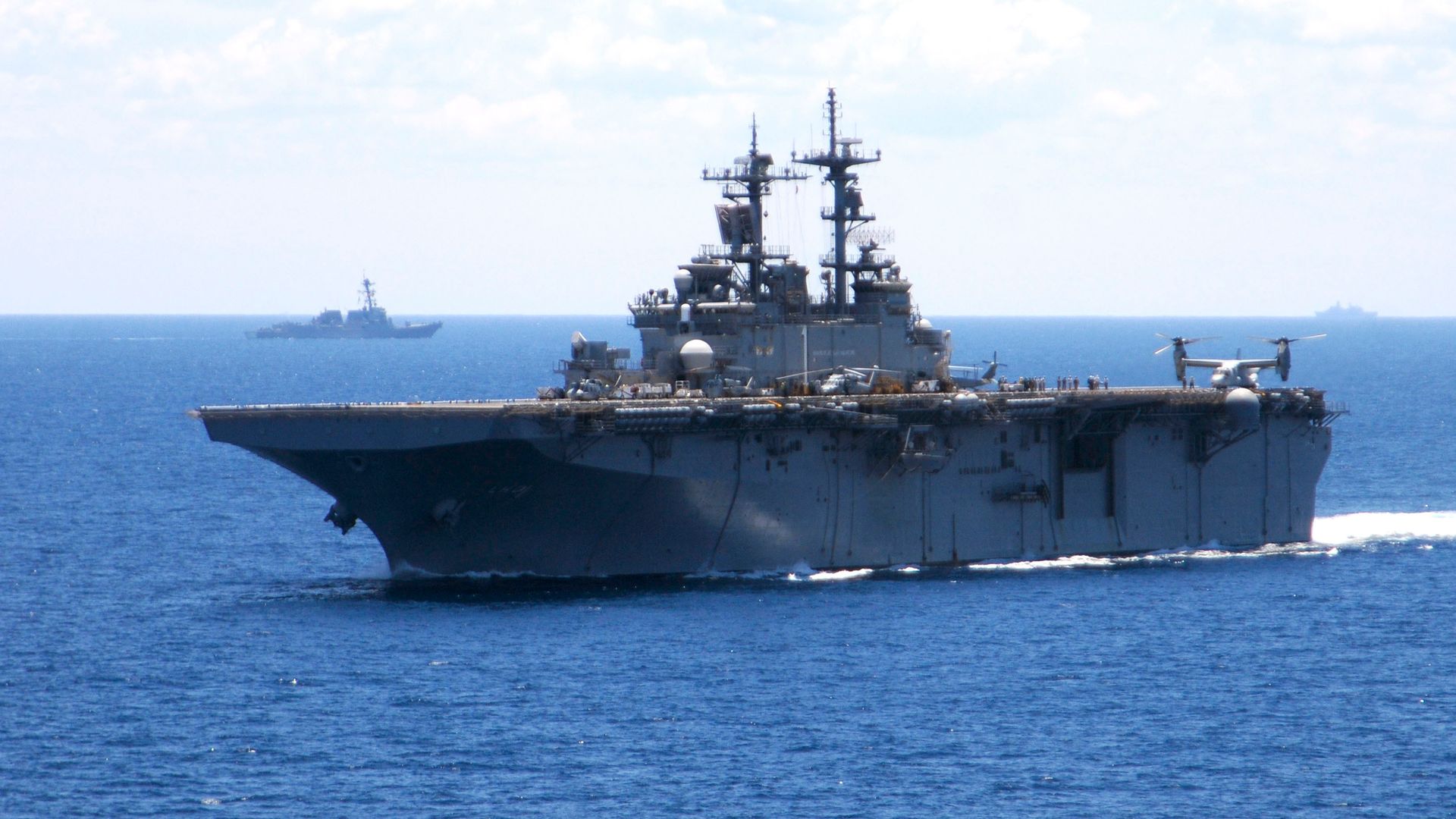
[Ryan Robertson]
THE LONG, STORIED HISTORY OF THE UNITED STATES MARINE CORPS IS FULL OF TALES ABOUT THE ELITE FIGHTING FORCE MAKING AMPHIBIOUS ASSAULTS AND LITTORAL OPERATIONS LOOK EASY. THEY AREN’T. AND ACCORDING TO A NEW GOVERNMENT ACCOUNTABILITY REPORT THE JOB COULD GET A LOT HARDER.
TASKED WITH TAKING THE FIGHT FROM THE SHIPS TO THE SHORES, MARINES MUST BE ABLE TO REACT QUICKLY TO CHANGING DYNAMICS. THAT COULD MEAN TAKING AND HOLDING CONTESTED TERRITORY, WHICH ALSO MEANS EQUIPMENT. AS PART OF THE DEPARTMENT OF THE NAVY, THE USMC AND ITS SISTER SERVICE WORK TOGETHER TO OPERATE SEVERAL CLASSES OF AMPHIBIOUS SHIPS; ALL DESIGNED TO ALLOW THE MARINES TO BE THE FIRST IN THE FIGHT.
BUT A DECEMBER REPORT FROM THE GAO SHOWS OF THE 32 AMPHIBIOUS VESSELS IN THE U.S. FLEET, ONLY HALF ARE IN “SATISFACTORY” SHAPE. THE OTHER HALF ARE CLASSIFIED AS BEING IN A STATE OF “POOR MATERIAL CONDITION”.
THERE ARE NINE AMPHIBIOUS ASSAULT SHIPS IN THE FLEET. THEY COME IN TWO CLASSES. THE AMERICA CLASS ‘LHA,’ OR LANDING, HELICOPTER, ASSAULT. AND ‘LHD’: LANDING, HELICOPTER DOCK.
AMPHIB ASSAULT SHIPS ARE GENERALLY THOUGHT OF AS THE LARGEST AND MOST CAPABLE AMPHIB VESSELS. THEY CAN LAUNCH AND LAND AIRCRAFT, AND SOME HAVE A WELL DOCK SO THE SHIP CAN TRANSPORT THE DIFFERENT LANDING CRAFT MARINES MIGHT NEED. THEY ARE VERY IMPORTANT TO THE USMC’S OVER-ALL MISSION OF BEING ABLE TO RESPOND WITHIN HOURS, WHETHER IT BE FOR A MILITARY MISSION OR HUMANITARIAN ONE, WHILE ALSO PROVING THE AERIAL SUPPORT OFFERED BY THE WORLD’S PREMIER JOINT STRIKE FIGHTER, THE F-35. HOWEVER, FIVE OF THESE POWERFUL AMPHIBIOUS ASSAULT SHIPS–MORE THAN HALF THE U.S. INVENTORY– ARE CONSIDERED IN POOR MATERIAL CONDITION.
IT’S A SIMILAR STORY WHEN IT COMES TO THE FLEET’S 10 DOCK LANDING SHIPS. THE NAVY WANTED TO RETIRE THEM ALL BEFORE THE END OF THEIR SERVICE LIFE. SO, IT CANCELLED ALL OF THE MAJOR MAINTENANCE PERIODS THAT WERE PLANNED. BUT CONGRESS SAID NOT SO FAST, AND ORDERED THE SHIPS STAY IN SERVICE. THOSE MAINTENANCE PERIODS, THOUGH, NEVER GOT RESCHEDULED.
DRIVING A CAR AROUND FOR THOUSANDS OF MILES AFTER YOU NEED AN OIL CHANGE IS A GOOD WAY TO BURN OUT SOME PARTS. THE SAME IS TRUE FOR NAVAL VESSELS, JUST ON A MUCH GRANDER SCALE.
SO, MANY OF THE AMPHIBIOUS SHIPS THAT NEEDED VITAL REPAIRS NEVER GOT THEM, RESULTING IN SOME MAJOR BREAKDOWNS. LIKE THE USS GERMANTOWN, WHICH WAS PUT IN A SPECIAL AND NOT CLEARLY DEFINED ‘SUPER CONTINUOUS MAINTENANCE AVAILABILITY’ STATUS BECAUSE OF ALL THE NEGLECTED AND DEFERRED REPAIRS IT NEEDED. THE USS TORTUGA IS ANOTHER SHIP PLAGUED WITH PROBLEMS. IT’S STILL ON THE NAVY’S ACTIVE ROSTER, BUT IT’S BASICALLY BEEN IN THE SHOP SINCE 2013.
THE GAO REPORT FOUND OF THE 13 INCIDENTS IN 2023 EFFECTING FLEET READINESS, SEVEN WERE RELATED TO DIESEL ENGINE PROBLEMS ON DOCK LANDING SHIPS.
THE DEPARTMENT OF THE NAVY IS STATUTORILY OBLIGATED TO FIELD 31 AMPHIBIOUS SHIPS. THERE ARE PLANS IN THE WORKS TO BUILD FOUR NEW AMPHIBIOUS SHIPS, BUT THE GAO SAYS THE NAVY AND MARINES WILL NEED TO WORK TOGETHER AND FIND CREATIVE SOLUTIONS TO MAINTAIN THAT 31-SHIP BENCHMARK IN THE YEARS AHEAD. SOLUTIONS WHICH WILL LIKELY INCLUDE EXTENDING THE SERVICE LIFE ON SOME SHIPS THAT ARE ALREADY IN DESPERATE NEED OF REPAIR.
ALL OF THIS WHILE THE NAVY WRESTLES WITH OTHER SHIPBUILDING CONCERNS IN ITS FLEET, A 20-YEAR MAINTENANCE BACKLOG, AND THE RISE OF WHAT IT CALLS A ‘NEAR-PEER ADVERSARY’ IN CHINA. THE PEOPLE’S LIBERATION ARMY NAVY IS BUILDING NEW SHIPS FASTER THAN ANY OTHER FLEET ON THE PLANET. BUILDING UP FOR A POTENTIAL, SOME SAY INEVITABLE, ASSAULT ON TAIWAN.
FOR STRAIGHT ARROW NEWS, I’M RYAN ROBERTSON. IF YOU WANT MORE UNBIASED, STRAIGHT FACT REPORTING LIKE THIS DOWNLOAD THE STRAIGHT ARROW NEWS APP TODAY.








